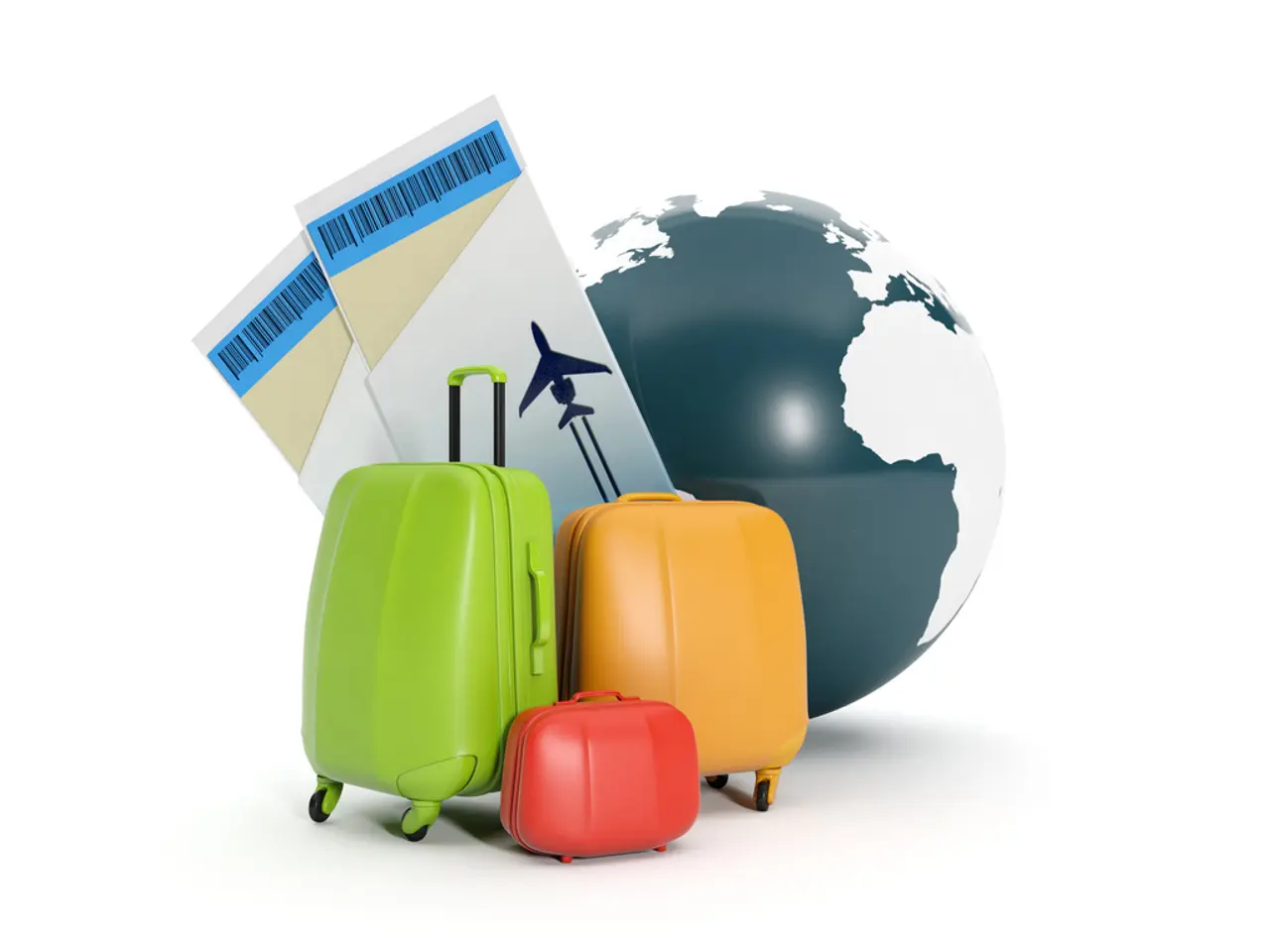Comprehensive Guide on Baggage Allowance - Smart Packing for Cost Efficiency
Travelling can be a hassle-free experience when you're well-prepared, and understanding baggage rules is a crucial part of that. Here's a breakdown of the common baggage restrictions for checked and carry-on luggage on major U.S. airlines in 2023.
### Checked Luggage
Most airlines allow checked bags with a combined length, width, and height of up to 62 linear inches (approximately 158 cm). The standard weight limit per checked bag is typically 50 pounds (23 kg). Some airlines or fare classes might allow heavier checked bags (up to 70 pounds or 32 kg), but these often come with an extra fee.
Economy or basic economy passengers usually pay a fee for the first checked bag, generally around $30-$35. In contrast, premium cabins (First, Business) and certain fare types often include checked bags for free.
### Carry-On Luggage
Most U.S. carriers' maximum carry-on dimensions are about 22 x 14 x 9 inches (56 x 36 x 23 cm). While carry-on weight limits vary by airline, many U.S. airlines do not strictly enforce a weight limit for carry-ons. Some international carriers may enforce lower limits.
Passengers are generally allowed one carry-on bag plus one personal item such as a purse or laptop bag.
### A Few Tips for Savvy Packing
- Compression bags can decrease the volume of bulky items like jackets and sweaters by as much as 80% when air is removed. - Prioritizing lightweight clothing and multi-purpose items can significantly reduce overall weight while keeping you stylish on your travels. - Utilizing multipurpose products, such as shampoo and body wash in one, can reduce the amount of liquids in carry-ons. - A bag with a built-in tracking device offers peace of mind, as 20% of modern designs incorporate this technology. - Travelers can save an average of 2.5 hours during packing and unpacking by using packing cubes.
Because airlines differ slightly and fees vary by route and fare class, passengers should check specific airline policies before traveling. Statistics show that over 30% of travelers are unaware of their airline's baggage rules prior to departure, leading to additional fees.
The average fee for overweight luggage across major U.S. airlines is approximately $100, with weight limits typically set to 50 pounds. To avoid such fees, it's essential to evaluate items before finalizing packing, as 55% of travelers carry unnecessary items.
Opting for bags that adhere to airline specifications can prevent unexpected fees due to oversized or overweight items. Utilizing technological resources, such as baggage calculator apps, can assist in determining the ideal packing strategy tailored to your chosen airline.
Lastly, it's worth noting that approximately 40% of travelers are unaware of the full scope of their membership benefits, leaving potential savings untapped. Always check your membership benefits to ensure you're making the most of your travel experience.
When booking flights, consult the airline's website for specifics, including dimensions for carry-on items and weight limits for checked bags. Happy travels!
[1] https://www.airlinebaggagefees.com/ [2] https://www.travelandleisure.com/airlines-airports/travel-tips/travel-hacks-for-packing-a-carry-on [3] https://www.businessinsider.com/travel-hacks-that-make-packing-easier-2018-5
Finance plays a significant role in managing the costs associated with travel. For instance, economy or basic economy passengers often have to pay a fee for the first checked bag, typically around $30-$35. In contrast, premium cabins and certain fare types typically include checked bags for free.
Understanding your lifestyle preferences can impact your travel choices as well. Prioritizing lightweight clothing and multi-purpose items can significantly reduce overall weight while keeping you stylish on your travels. Utilizing technologies, such as baggage calculator apps, can help determine the ideal packing strategy tailored to your chosen airline, potentially saving you money on excess baggage fees.




